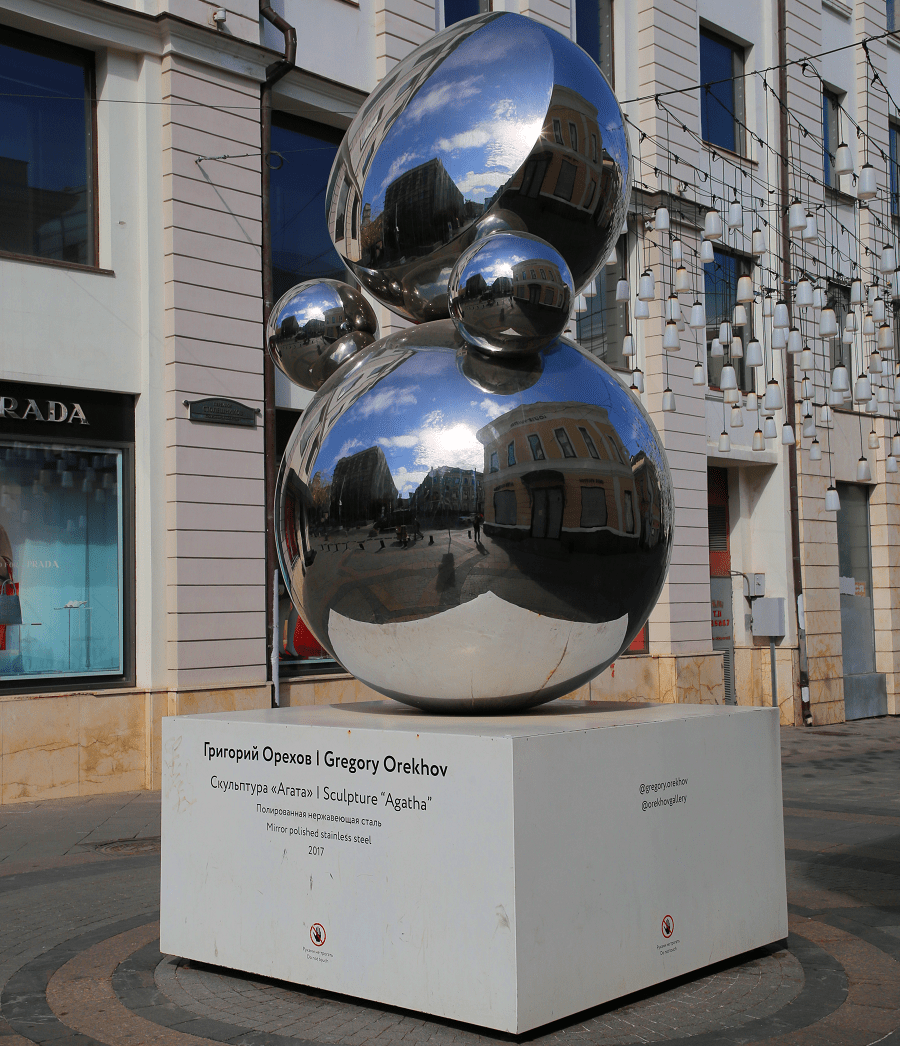Stoleshnikov Lane (in the 16th-17th centuries – Rozhdestvenskaya Street, in the 18th-19th centuries part of it – the former Kosmodamiansky Lane) is a lane in the Central Administrative District of Moscow. It runs from Tverskaya street to Petrovka Street, crosses Bolshaya Dmitrovka, and runs parallel between Tverskoy Proyezd and Kamergersky Lane, further turning into Kuznetsky Most Street.
The numbering of houses is conducted from Tverskaya Square.
The outdated name of the tablecloth gives the name of the lane. This tabletop was manufactured by weavers who have lived here since the 17th century.
In the Soviet years, Stoleshnikov Lane was known primarily for its bookstores, which were considered the best in Moscow. After the collapse of the USSR, fashionable boutiques and stores of various Western brands gradually chose the lane, and it became one of the most expensive shopping places in Moscow, along with Tretyakovsky Proyezd and Barvikha. In 2007, consulting company Jones Lang LaSalle recognized it as the second most expensive shopping street in the world after the Champs Elysees in Paris.
Notable buildings
On the odd side
No. 1 – House of O. A. Titov (1909, architect N. D. Strukov).
No. 5 p. 2 – Profitable house of the Mozgins (1911, architect K. L. Rosenkampf).
No. 7, building 1 – Apartment house with a wine shop by O. P. Leve (1903, architect A. E. Erichson), an object of cultural heritage of regional significance.
No. 9, pp. 1-5 – The city estate of the 18th-19th century has the status of an object of cultural heritage of federal significance. Building five houses the V.A.Gilyarovsky Museum and Exhibition Center (a branch of the Museum of Moscow).
No. 9, p. 1 – Profitable house Karzinkin (1874, architect V. N. Karneev). The writer V. A. Gilyarovsky lived in apartment No. 10. Since 2003, the museum and exhibition center of V. A. Gilyarovsky has been located here with the status of a department of the Museum of the History of the City of Moscow.
No. 9, p. 3 – The oldest building in the 9th and 7th households at the beginning of the 19th century belonged to the choreographer Jean Lamiral. It was rebuilt several times in the 19th century.
No. 11 is an apartment building (1883, architect I.S. Bogomolov), an object of cultural heritage of regional significance. Opera artist Platon Tsesevich, playwright Valery Frid, actress Daria Zerkalova, and poet Musa Jalil lived in the house.
No. 13/15, p. 1, – an apartment building with shops by A. S. Gracheva (1901, architect E. M. Rosen).
No. 13/15, p. 5, – profitable house of the insurance company “Anchor” (1905, architect O. V. von Dessin).
On the even side
No. 2 – Temple of Cosmas and Damian (Annunciation of the Most Holy Theotokos) in Shubin, erected in 1722 on the site of the temple, founded in 1625 instead of the former wooden church, from which the plan and part of the masonry remained. The church was built in the Baroque style, but in the 19th century, it was reconstructed with classicist features.
No. 10/18, building 2 – a residential building with a shop (XIX century).
No. 10/18, p. 3 – In this building, built after the Moscow fire of 1812 and owned until the beginning of the 20th century by the family of Lieutenant Alexander Stepanovich Ladyzhensky, P. I. Yurgenson’s music shop operated, which was visited by P. I. Tchaikovsky, N. G. Rubinstein and other musicians and music critics. An object of cultural heritage of regional significance.
No. 6, p. 2 – City estate of the Kozhins (mid-18th-19th centuries), an object of cultural heritage of federal significance. Before the revolution, the architect K. A. Dulin lived here.
No. 12 – until 1997, this place was the House of the Office of the Moscow Chief Police Chief. Built in the 18th century, a two-story house was destroyed despite its protected status, and a remake was erected, which currently houses a Hermes brand store.
No. 14, p. 1 – apartment house of A. A. Karzinkin (1900-1901, architect V. V. Barkov). P. G. Tager, an inventor in the field of sound films, lived in the house.
No. 16 – This place was the house of the peasant A. L. Vasiliev with a photo studio on the top floor (1900-1910, architect L. F. Dauksha). The house was demolished in 1997, and a new one was erected in its place, in changed proportions and with the addition of further details. The building has wholly lost its authenticity.
Nearest metro: Okhotny Ryad.
See more streets and squares in Moscow, monuments of Moscow, architecture of Moscow.















